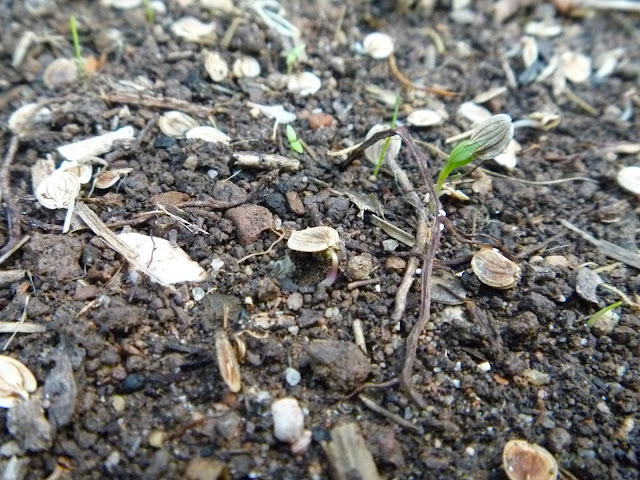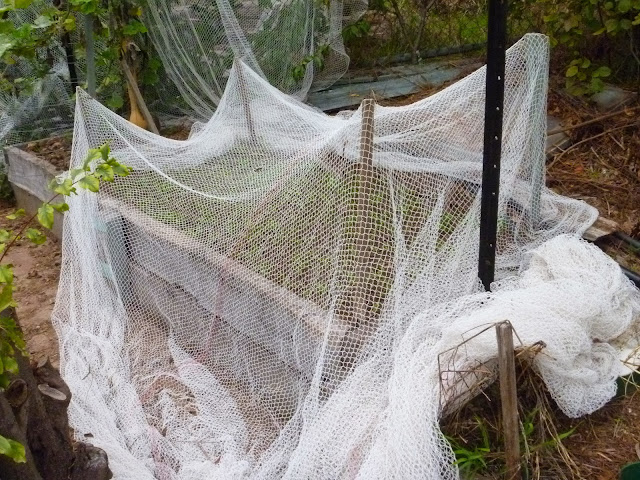|
|
Post by diane on Feb 15, 2013 0:00:33 GMT -5
re the complaint about late delivery of seeds:
That's my complaint about my parsnips - by the time
the seed is ripe, it's too late to sow it. Very bad
planning on its part.
Of course, it doesn't matter to the plant - it works
well for it. My father used to have healthy parsnip
plants that had sown themselves in the cracks in
his concrete driveway.
|
|
|
|
Post by ottawagardener on Feb 15, 2013 9:56:49 GMT -5
How did he harvest them?
Parsnips is one of the seed I'm experiment with as a self sower, and to adapt to local conditions, i.e. seed saving. It probably reacts well to fall sowing though I've not done that (or did I this year? must check notes). Lots of bitty babies overwintering at the moment under the snow.
|
|
|
|
Post by YoungAllotmenteer on Feb 17, 2013 4:49:27 GMT -5
I have also found a turnip rooted Carrot called 'Paris Market Atlas'. It is meant to be golfball size.
|
|
|
|
Post by Joseph Lofthouse on Apr 10, 2014 23:16:59 GMT -5
I have had horrid trouble germinating parsnip seeds. This year I finally got it right....
Since I grow my own parsnip seed, I planted about a cup of seed in a 40 foot long row. (Overcompensating for bad results in the past.) Tossed it onto the surface and then scuffed my feet along and stomped it in well. I planted it right after the snow melted. A couple days ago I saw the results. Oh My Heck! It was a mat of seedlings. I'm not looking forward to the tremendous thinning problem I created for myself, but they sure germinated well, and at least in the row they should smother out any additional weeds.
I figure that I have been planting them too late.
|
|
|
|
Post by raymondo on Apr 10, 2014 23:30:44 GMT -5
Mine self-sow and come up not long after, autumn mostly. Depends on when the parent goes to seed.
|
|
|
|
Post by templeton on Apr 11, 2014 0:03:54 GMT -5
So Ray, do yours germinate in autumn, grow through the next summer and autumn, then flower the second spring? Long time between generations! Here's a pic of my Halblange weisse F2X on the left, and Kral F2X on the right,siblings from mass crosses. garden fork for scale, and these are post-seeding, thus the scungy look, and huge stalks growing out the middle of each plant.  Interesting that the stumpiest one is HalblangeX, tho the krals are overall thicker and shorter. There are probably this many plants again still in the bed, but they were a bit later flowering and the seed is still drying off. hoping that the crossing will ensure enough diversity given the low numbers I particularly like the blunt rooted characteristic of the right most Halblange (middle left of the photo). I've sown two beds of the seed of both these, hoping for a bit more bluntness and stumpiness. A further small bed of the later seeders will go in a few weeks. I'll be selecting in spring, then growing out the short fat ones for seed. These biennials are a pain! T |
|
|
|
Post by templeton on Apr 11, 2014 0:54:48 GMT -5
The way I've sown the seed this season is at about 50-100 seeds per 10cmX10cm square, onto well-prepared damp soil, then tamp it down with the flat head of a rake. I then laid shadecloth directly on the soil, and kept the bed moist with daily waterings. Note international 'Reinheitsgebot' unit of measurement for scale  T   |
|
|
|
Post by raymondo on Apr 11, 2014 16:26:34 GMT -5
Nice photo T.
The parsnips that come up in autumn (currently several hundred which will need thinning) grow over winter then flower the following summer. Biennials only need a good cold period to trigger flowering, at leaast, that's my experience of them.
|
|
|
|
Post by templeton on Apr 11, 2014 18:23:55 GMT -5
Nice photo T. The parsnips that come up in autumn (currently several hundred which will need thinning) grow over winter then flower the following summer. Biennials only need a good cold period to trigger flowering, at leaast, that's my experience of them. So do you get enough growth in autumn/winter/spring to get decent sized roots? Autumn planting for seed harvest the next summer has been my strategy to date, but only for seed increase and crossing purposes. I'm hoping that this autumn's planting will produce some roots by early spring to allow me to do some selection for shape and flavour. I'll probably also put some in in spring for the same purposes, but the time delay for seed set, and the taking up of space and water for such a long period makes it problematic. T |
|
|
|
Post by steev on Apr 11, 2014 21:19:33 GMT -5
Do you find any difference when mulching with brown, versus green, bottles?
|
|
|
|
Post by richardw on Apr 11, 2014 22:02:56 GMT -5
Do you find any difference when mulching with brown, versus green, bottles?  |
|
|
|
Post by robertb on Apr 19, 2014 19:41:31 GMT -5
The best way I've found is to water the seed well in, then put a plank on top of the row. Keep checking, and remove it when the first seedlings appear. The difficulty seems to be that the top half inch of the soil, where the seeds are, dries out easily, and this is fatal.
|
|
|
|
Post by templeton on Apr 19, 2014 20:44:00 GMT -5
The best way I've found is to water the seed well in, then put a plank on top of the row. Keep checking, and remove it when the first seedlings appear. The difficulty seems to be that the top half inch of the soil, where the seeds are, dries out easily, and this is fatal. I've used this with carrots with success, and 'nips without quite the same success, but the shadecloth works well on broadcast seed,and where I've sown larger areas. Bonus is I can leave the shadecloth in place after the first seeds emerge, which gives others a chance to come through. I've since replaced the shadecloth with bird netting strung over short (450 mm) plant stakes, to dissuade the blackbirds from raking the whole lot onto the path. And some of the Kral F2 MX roots.   T |
|
|
|
Post by steev on Apr 20, 2014 23:30:12 GMT -5
Looking at those, I'm wondering whether you're growing them for seed; those look like huge stalks.
|
|
|
|
Post by templeton on Apr 20, 2014 23:46:01 GMT -5
Looking at those, I'm wondering whether you're growing them for seed; those look like huge stalks. Yep, they are my seed plants, after I harvested the seed. The stalks grew over 8 foot high. T |
|